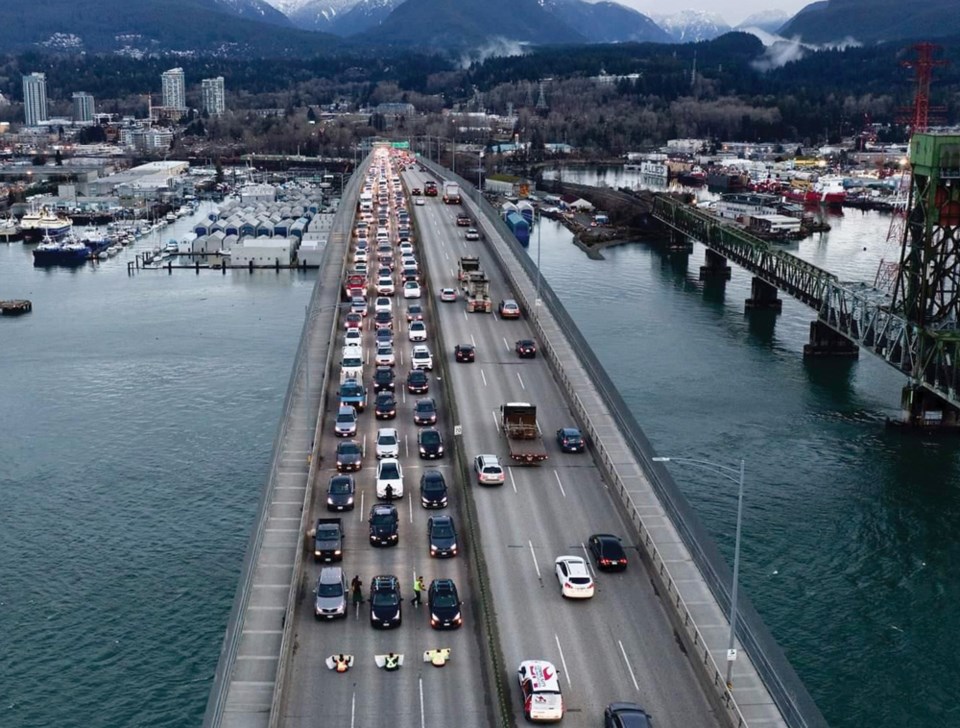If you were late for work Monday, you’re already aware of a protest mounted by activists opposed to old growth logging who shut down part of the Ironworkers Memorial Second Narrows Crossing for half an hour. Six young people who super-glued themselves to the road were promptly arrested and traffic resumed.
At the same time, a “Freedom Convoy” or “Omicronvoy” (as it’s also been dubbed) of truckers disrupted the lives of residents and businesses in Ottawa, plugging up streets with their rigs for days of increasing frustrations.
In both cases, those protesting have a message they feel hasn’t been heard through more conventional channels. In both cases, protesters have opted for brash moves to make their points and try to coerce change. But the difference in how the logging protesters – and others including local Indigenous people who have protested the Trans Mountain pipeline expansion – and the trucker protesters have been treated by police and other authorities is striking.
The environmental and Indigenous protesters have remained peaceful but have been promptly arrested for their actions. In contrast, authorities have taken a decidedly hands-off approach to the “truckers” (who don’t actually appear to represent truckers as much as a hodgepodge of angry alt-right conspiracy theorists). This despite their alarming use of racist Nazi symbols and a willingness to deface national monuments and to disrupt lives for a protracted period of time.
The difference between the two groups is in the potential political clout they hold. The “hands off” approach to the Omicronvoy compared to other protesters is as dismaying as it is instructive. Some acts of civil disobedience are clearly more equal than others.



